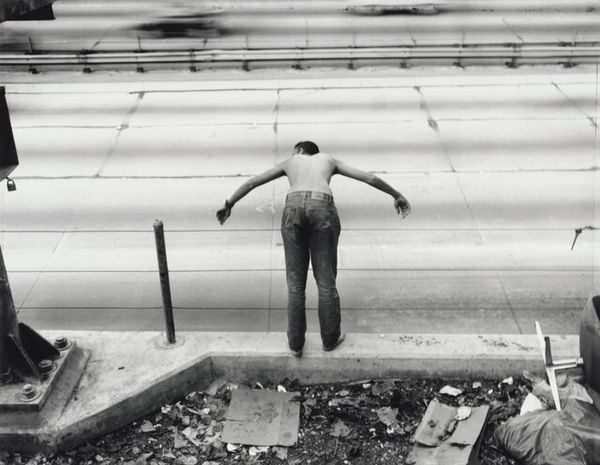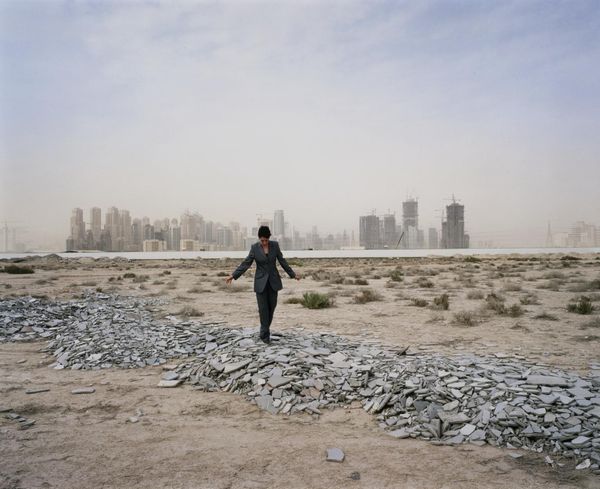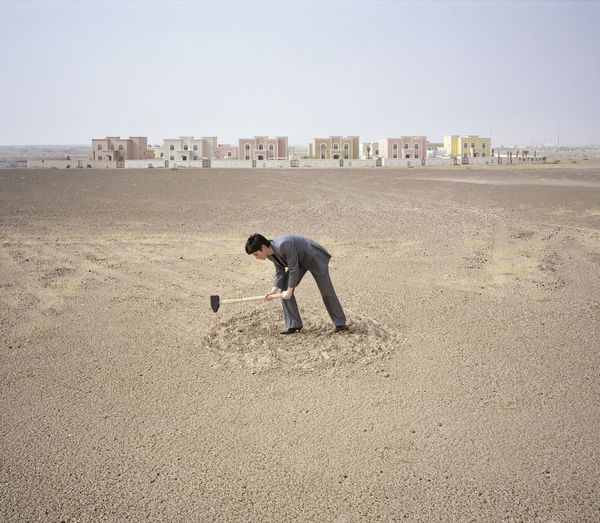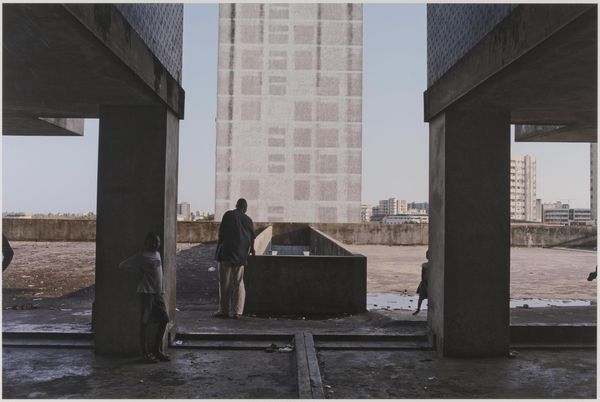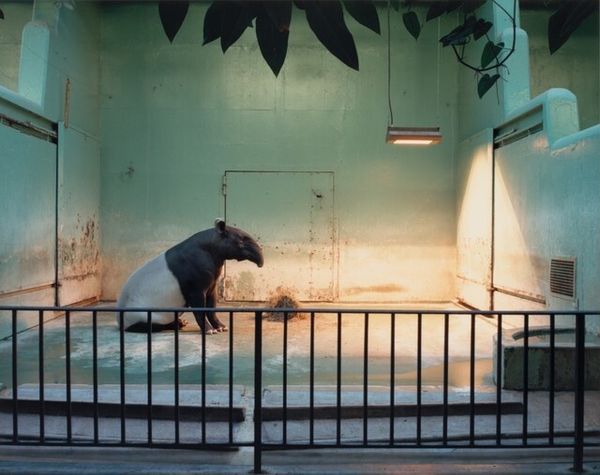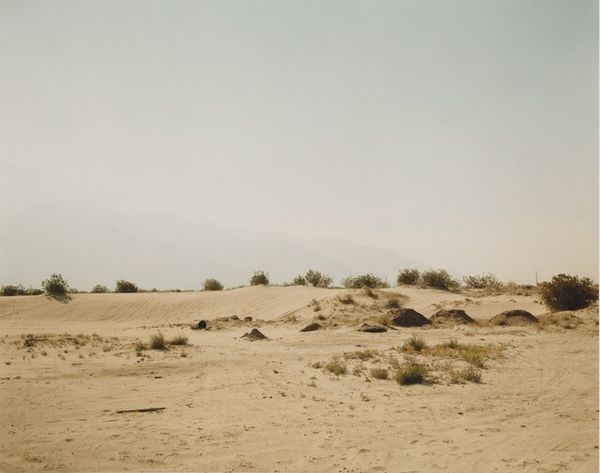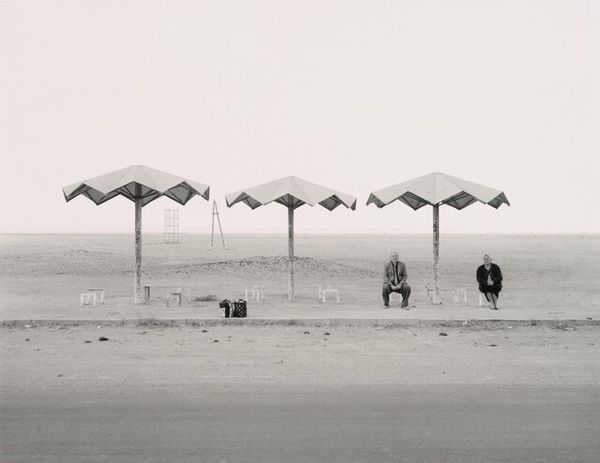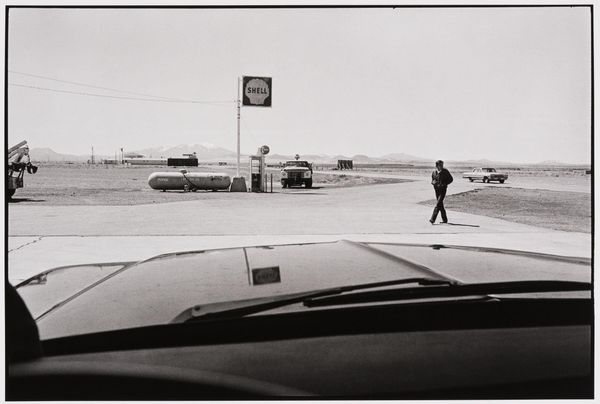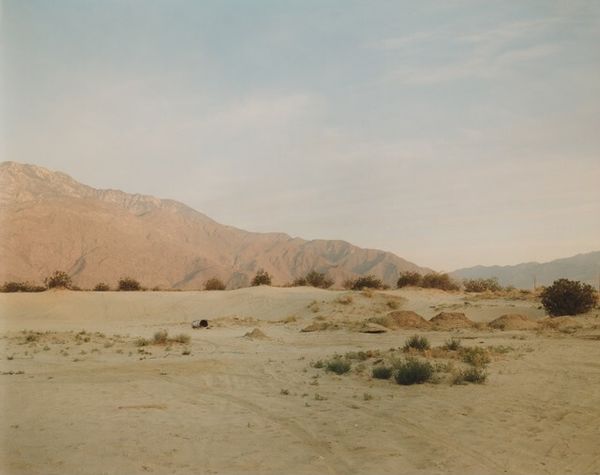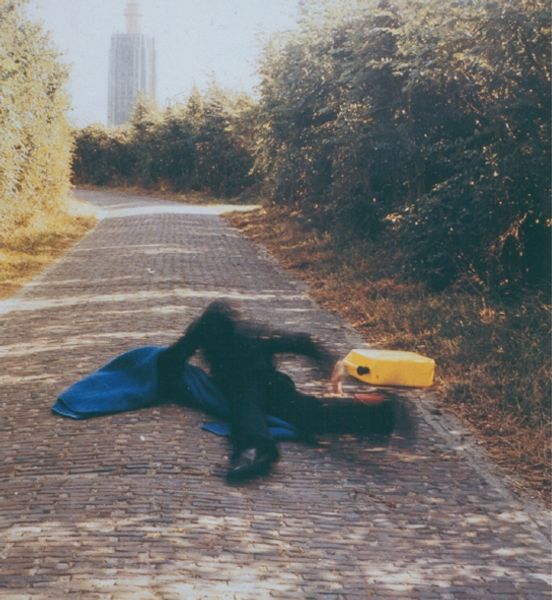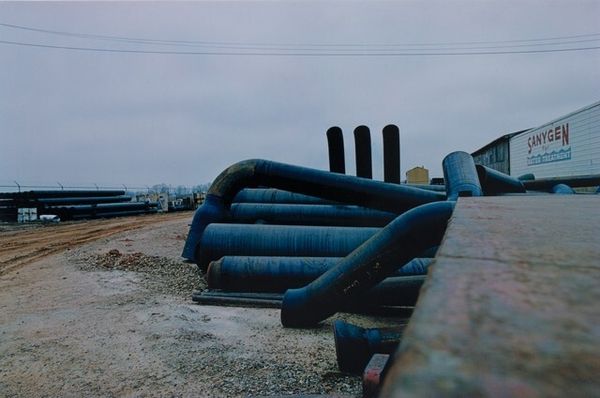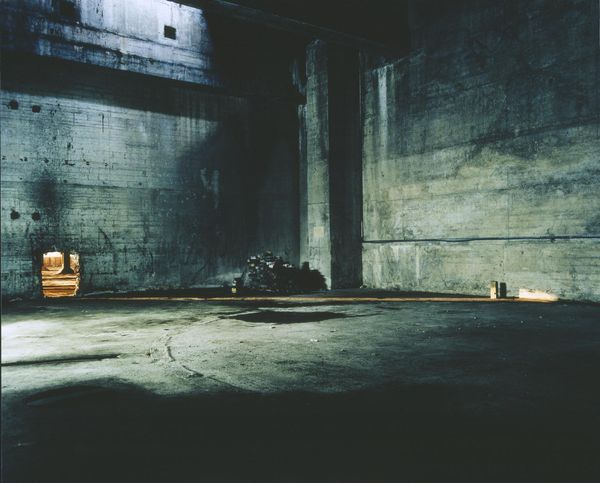
Dimensions: image: 1219 x 1422 mm
Copyright: © Carey Young, courtesy Paula Cooper Gallery, New York | CC-BY-NC-ND 4.0 DEED, Photo: Tate
Editor: Carey Young’s photograph "Body Techniques (after Sculpture II, Kirsten Justesen, 1969)" shows a figure collapsed on an empty road. It’s quite striking. How do you interpret this work in the context of gender and performance? Curator: The original performance by Justesen was an exploration of female identity in sculpture. Young's re-staging, particularly within this stark, almost industrial landscape, invites questions about power, visibility, and vulnerability within contemporary society. Editor: So, the figure's pose is less about surrender, and more about resistance? Curator: Perhaps, or maybe a commentary on the physical and psychological demands placed on bodies, particularly in corporate environments? It reminds us to question the spaces we inhabit and their effects on our sense of self. Editor: That's a powerful point. Thanks, it really changes my perspective. Curator: Absolutely, art should prompt these critical dialogues.
Comments
tate 6 months ago
⋮
http://www.tate.org.uk/art/artworks/young-body-techniques-after-sculpture-ii-kirsten-justesen-1969-p79821
Join the conversation
Join millions of artists and users on Artera today and experience the ultimate creative platform.
tate 6 months ago
⋮
In this colour photograph the artist Carey Young is pictured curled up on her side in a foetal position with her hands wrapped around her legs in the middle of an empty road that runs between two rows of newly constructed buildings. The buildings on the left are coloured bright blue while those on the right are a pale yellow, and the orthogonal lines created by their symmetrical roofs almost meet in a vanishing point at the centre of the image. No other figures populate the scene, the emptiness of which is heightened by a large expanse of cloudy sky in the top half of the composition. The fact that Young wears a plain, dark grey business suit only serves to emphasise the incongruity of her presence in the landscape.

